In his very first question and answer session with employees after becoming CEO of American Airlines, Robert Isom implored them not to spend a dollar more than they need to. Two and a half years later, with the airline posting disappointing earnings in the second quarter and projecting that they will not earn any money in the third quarter, he says the revenue problem is easily fixed but he’s most proud of their control of cost.
In a presentation to employees following the airline’s second quarter earnings call on Thursday, a recording of which was reviewed by View From The Wing, employees were told that American should be performing financially like United and Delta, but CEO Isom emphasized that no airline is better at being careful with a dollar than American.
And, he says, that’s even more important – it’s easier to fix revenue than to fix an airline that spends too much. In fact, it’s a competitive advantage.
We are doing an exceptional job at running a solid airline, and doing it efficiently. So we have a number of efforts going on right now about re-engineering the company. It’s really about making sure we use our resources in the best way, do things in a way that takes care of our customers, serves their needs, but makes sure that we’re being really efficient about not spending any more than we have to.
And that’s producing results. There is no airline today that is running a tighter ship in terms of expense and cost management, and that is also something that is very difficult to duplicate.
It’s one thing if you’re not producing from a revenue perspective, but it’s another if you really don’t have a handle on what you spend. So from an operations perspective, and from a spending perspective, I really like what I see.
Here’s what not spending any more than they have to looks like in the cabin.
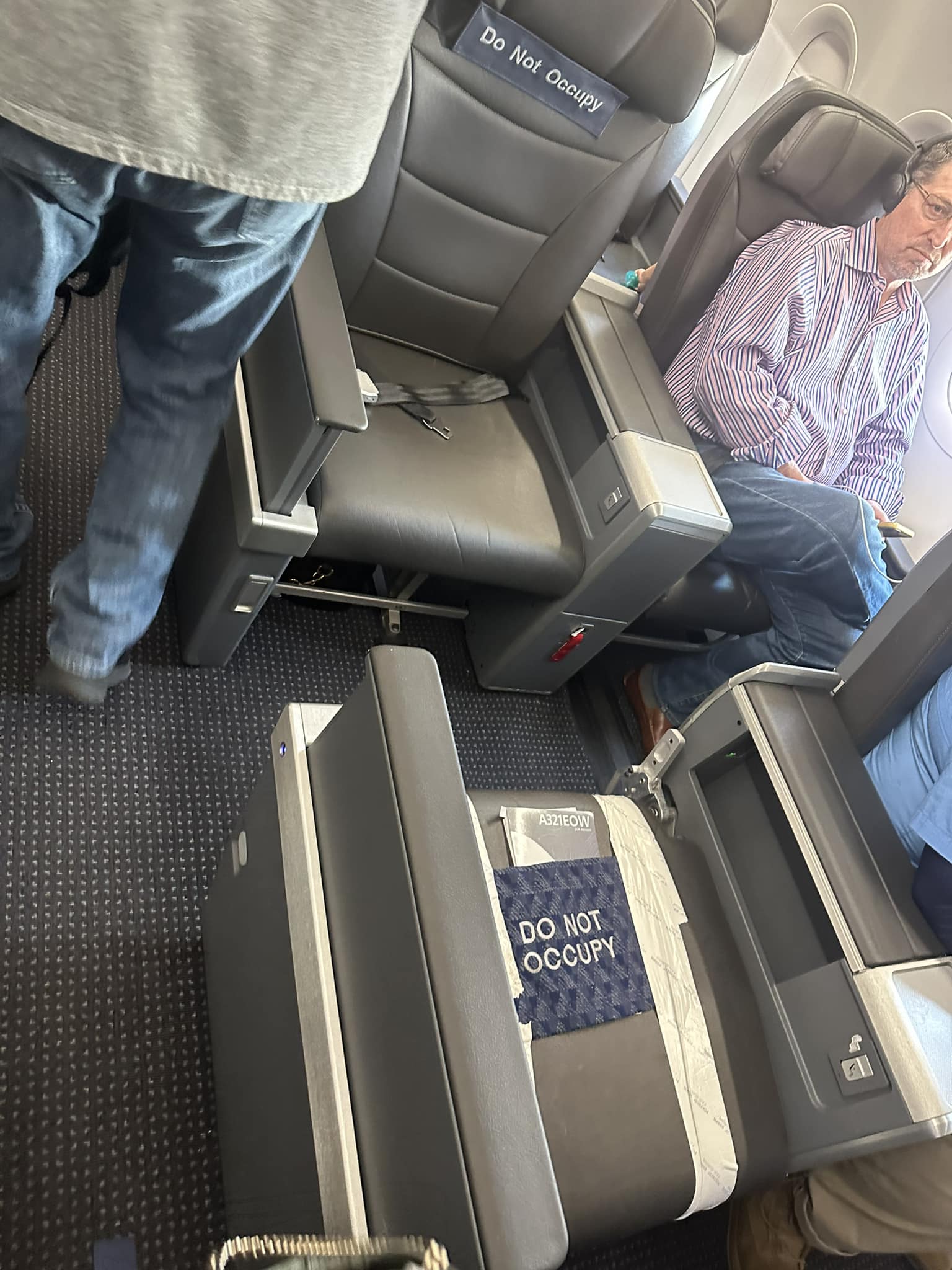
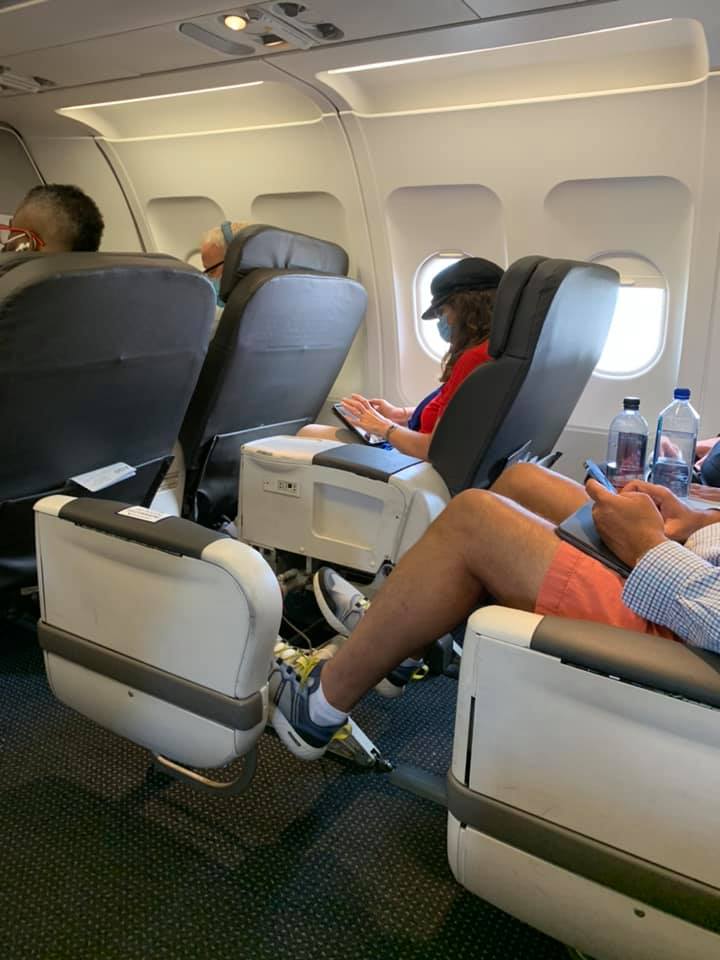
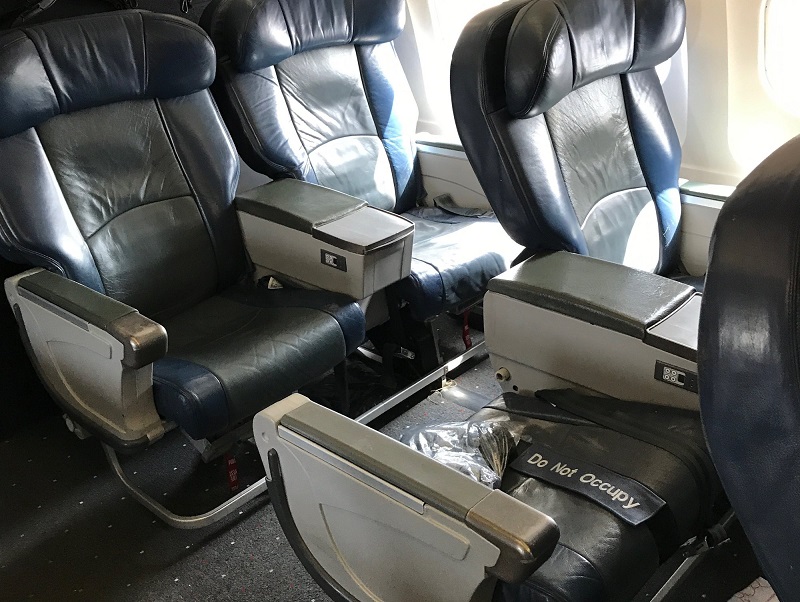
Looking for places to cut costs, and avoiding expenses, aren’t priorities that are ultimately consistent with delivering a top notch product that drives a revenue premium – and given American’s relatively high costs and high debt load, they need to be driving revenue premium by delivering a product customers willingly pay more for.
- If an airline needs to buy seats, is it really necessary to spend a dollar more than needed buying them in order to get the latest or most comfortable product?
American Airlines got itself into trouble when they didn’t invest in a cabin mockup for their standard domestic product before rolling it out. It wound up uncomfortable in first class, and without under seat storage for half the passengers. Lavatory doors smacked into each other, and water sprayed back out of the sink onto passengers. Galleys were tough to work in. They wound up spending more money retrofitting planes they’d just retrofitted – and they still had subpar first class seats and not enough extra legroom seats to sell.
- If you need to provide meals to premium customers, how much do you invest? Steak or short rib (‘mystery meat’)? How much should you put into your wine program? Those investments might drive premium customer satisfaction but it might be difficult to tie a given ticket purchase to the spending. And you don’t have to spend more when $1 shelf stable pasta lets you check off the box of having a ‘meal’. And why restore anything other than cardboard box meals on regional flights?
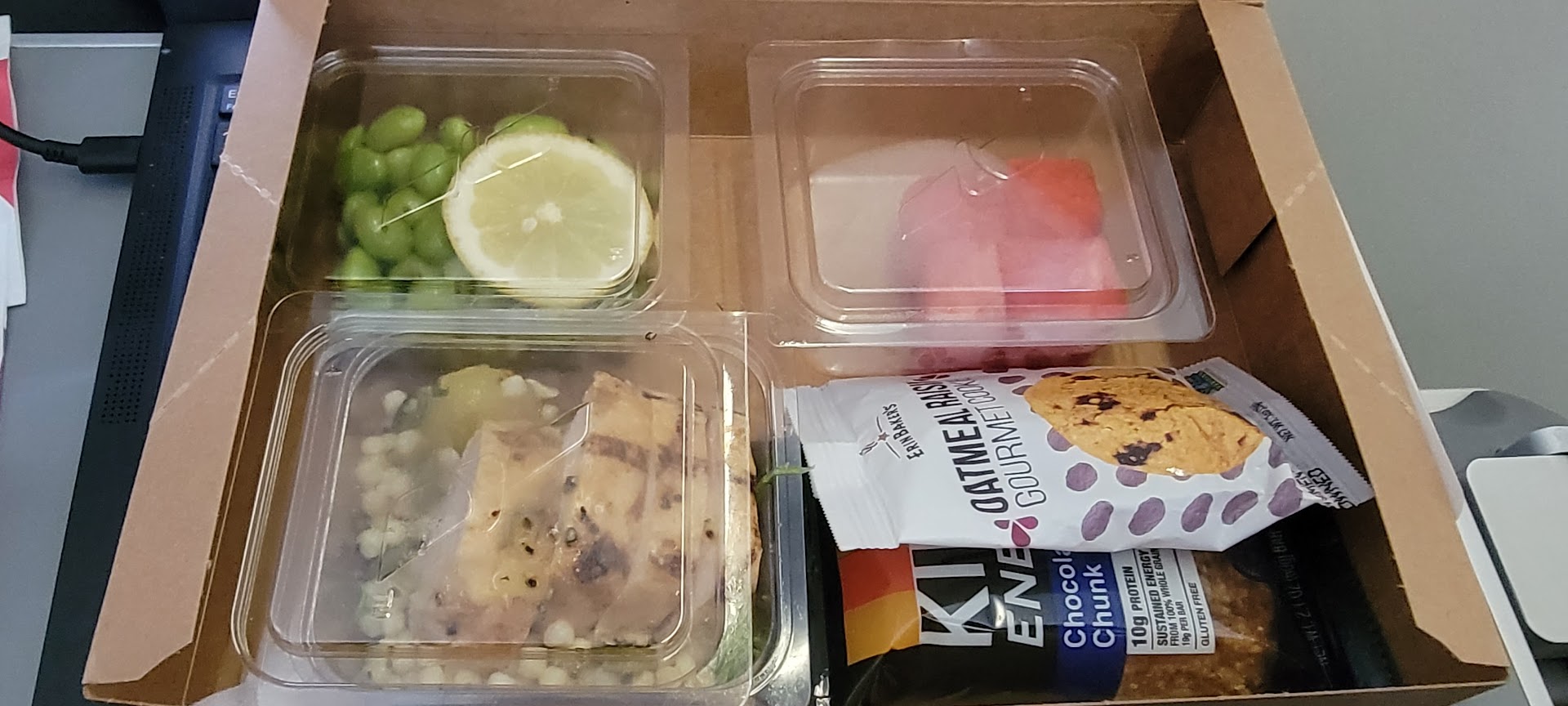
- Do we spend a little more on the catering company that delivers a great product and always stocks flights properly and on time, or accept a bit lower quality meal and occasional miscatered flights? One provides a consistent great product for customers, the other risks criticism for spending “a dollar more than we need to.”
- Premium cabins get amenity kits on long flights, but is giving the same products to business and first class that you give to premium economy good enough? Why spend more?
- When there’s life left in a product, do you replace it because it’s not the best experience? Is that dollar of spending necessary, especially when you believe it’s operational reliability that’s what actually matters?
There’s a difference between ‘not spending a dollar more than you need to’ and ‘being a good steward of shareholder resources’. One can be penny wise, pound foolish while the other makes calibrated investments – spending based on an informed bet about how the decision will return greater revenue, or avoid bigger future expense.
US Airways delayed investing in internet for years, believing they’d never generate more money selling the service than it cost to install. They didn’t want so spend money unnecessarily. Eventually they admitted they were wrong when they saw they had been losing business for some time from customers who weren’t willing to book tickets on an airline without internet.
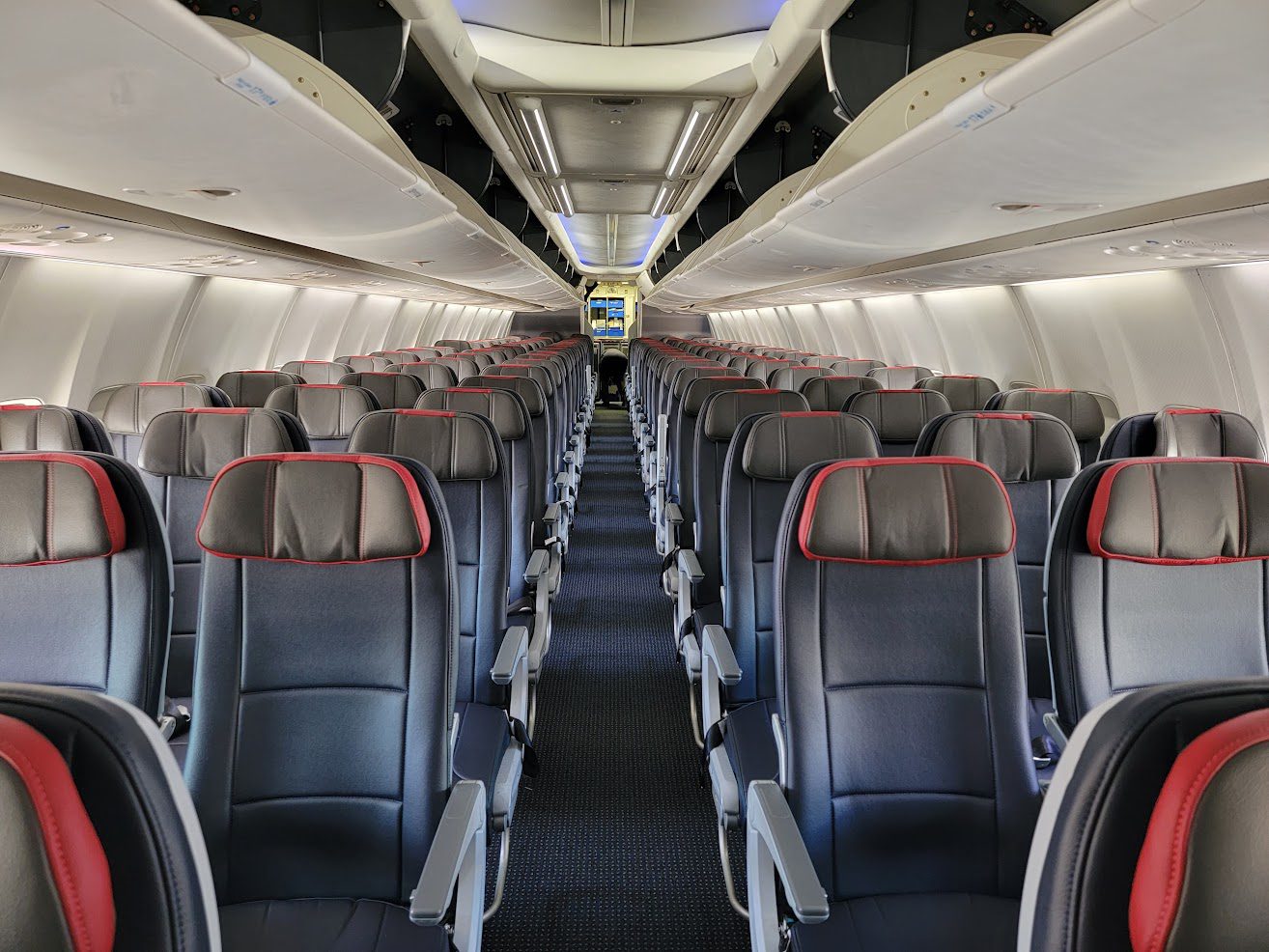
I’ve written that “you can take management out of Tempe but you can’t take Tempe out of management.” The idea is that America West took over US Airways and then American, with America West now doing business under the American Airlines name and with the America West mindset. But Northwest Airlines is just as important in the culture now.
Northwest was a terrible airline with a (mostly) terrible product. The WorldPerks program was generous with its elites because they had to do something to keep customers loyal. They simply didn’t like spending money, and didn’t think customers noticed, cared, or knew the difference.


Not sure it makes any sense only to focus on expenses while ignoring service and performance. You’d save even more money by shutting down the airline, but so what?!
“ American Airlines got itself into trouble when…”
I get an article about what drives a revenue premium but I don’t really think any of what you mention is what got aa into trouble. Frankly, I doubt you’d disagree since you’ve written about it.
AA’s issue is the suffocating non—op line that is crushing their ability to generate any real FCF for the moment
And that is ultimately driven by the ridiculous idea from Doug Parker that you could do stock buybacks from debt rather than excess free cash flow.
Any discussion about AA’s revenue and attempts to raise it are ultimately hampered by the reality that aa is walking a very very tight rope with little wiggle room for mistakes due to their debt so it causes them to make these types of AMR “we can only do cost cutting, no revenue initiatives to fix this” mentalities of the 2000s.
I certainly understand the point of your article and it’s more about the “now” than what got them to this current financial place, but AA’s current decisions are, in my opinion, ultimately forced upon them by the disastrous debt burden placed on them by Doug Parker and a ridiculous idea that stock buybacks can be financed by debt (which then obviously made AA’s position even worse during the pandemic)
Were the seats broken for.a day. A month A year ? Broad assumptions over 3 pictures. I’ll be sure to tell isom that anytime a seat breaks to cancel that flight immediately
I wanna live in the la-la land where these airlines executives live and smoke what they’re smokin’
@Wayne – see for instance https://viewfromthewing.com/american-airlines-has-to-deny-passengers-boarding-skip-upgrades-because-plane-goes-weeks-with-broken-seats/
Isom better get it in gear! With the ULCCs changing their business models, to compete with legacy carriers, because they no longer work, AA needs to quit chasing them and start chasing DAL and UAL! AA BOD hear this: ISOM NEEDS TO GO!
American Airlines’ penny-pinching ways cost them my dollars which have instead gone to other airlines and other transport companies. For but one kind of example of several where American Airlines’ penny-pinching ways have cost them my dollars: AA’s refusal to check luggage across separately-ticketed itineraries even for AA+AA and AA+BA/IB/AY travel has meant that money that could have gone to AA has instead gone to DL and UA.
Well, they just lit a bunch on money on fire with the flight attendant contract. Let’s see what the return on investment is for that and how much premium revenue it drives with the majority of flight attendants swearing that absolutely nothing will change onboard.
Here is my money-saving penny-pinching recommendation to American Airlines CEO, corporate Scrooge, and miser Robert Isom. Post this notification in every aircraft toilet to help save gallons of expensive blue juice. “If it’s yellow, let it mellow. If it’s brown flush it down.” VFTW readers can help save American Airlines by posting tips on saving money here.
You can’t cheapen your way to prosperity. In reference to NWA, AA has some of that cheap mindset with Mr. Steenland on the property.
For the life of me, I don’t understand why shareholders continue to tolerate Isom. Like Parker he’s a one-trick pony. The whole US regime has it hard-wired into their one-dimensional brains that answer to every malady under the sun is cost cutting. It stopped working a very long time ago.
The whole “American Airlines got itself into trouble when they didn’t invest in a cabin mockup for their standard domestic product before rolling it out” thing is the poster child for “penny wise, pound foolish.” Unfortunately not much at America West / US Airways / American Airlines has changed. Their places are not held together with “spit and Scotch tape,” but it’s certainly getting to feel that way.
DL can get away with having 185 Boeing 757s and 767s in their fleet (avg. age 26+ years) because of what the onboard experience is like. American needs to invest money (“Oh, no” I hear the C-suites cry) in onboard experience, maintenance, and customer service if they want to recapture lost revenue/lost pax…
[“planes” not “places’]
The executives at American Airlines are not in the right industry. The things that AA comes up with, it seems like they don’t care at all about their product or people. It goes on…
I’ve been saying for years that the root of American’s problems right now can be traced to the Northwest Airlines leadership and mindset that now runs the company. Northwest generally made money, but did so with a marginal (at best) product and terrible employee relations. At one time AA could easily tout its product and service to high value customers, but when the merger with US happened, the LCC mentality grabbed the wheel, and AA ceded the top tier to DL and UA without a fight. Vasu has become the fall guy for several monumentally bad decisions with network, partnerships, and sales, but he didn’t make those decisions in a vacuum. The rest of leadership was either complicit or willfully ignorant. The same goes for AA’s BOD and their rubber stamp blessing on so many bad moves. Incidentally, the “don’t spend a dollar more than we have to” directive apparently does not apply to executive level compensation. I’ve never seen a leadership team reward themselves so lavishly for poor performance, product, and culture.
Pennywise and pound foolish. Knowing when ( and) where to spend the dollar takes foresight and good management. Something foreign to AA.
The problem here is that AA has to spend some money to win corporate travel and look at segmenting more of its products and services. This is how Delta makes money and creates the grand illusion, fully delegitimized following the Crowdstrike debacle, that it has a “premium” halo.
American needs to upsell more. It needs to find a way to monetize those wide body premium seats flying on some domestic routes. It needs to get out of the sunbelt mindset and double down on the business markets (and win back corporate contracts).
American needs a new c-suite and a massive transformation. It is still run like the airline it was pre-merger and the USAirways overlay has done nothing to improve upon that.
And for its newly pay-raised flight attendants, the “folksy” down home “Americana” shit they perform as a service element when they rise to the occasion needs to go. Crisp, attentive, polite, and above all uniform standards, need to be in place. American has a phenomenal brand and potential, but it does not leverage it.
Once again our “thought leader” is a prevaricator of truth. He’s “leading” with seats pictures from the old US Airways interiors. Of course he doesn’t disclose this minor detail. Second point, a picture is a snapshot in time. How long were those broken seats in service? If it happened same day, would you prefer to cancel the flight? Of course not.
There are plenty of current examples of not spending needlessly. This spending statement was also made a few years ago. And at that time they went on to spend money, needlessly, to add the logo to the winglets.
Isom had years to implement a coherent revenue strategy, instead he and his team opted to focus exclusively on costs and abandoned its premium customers and revenue, which now gives them little (if any) room to differentiate on price. And back to the cost-cutting game.
No way out but another restructuring of the debt (and a competent new board and C-Suite). Firing Isom would save $30M+ annually, for starters.
It’s worth noting that there a few Northwest Airlines people at AA
Isn’t this exactly the same thing they’ve been saying FOR YEARS?
“He’s “leading” with seats pictures from the old US Airways interiors”
1) The photo I lead with is from N148AN, a 2015 delivery Airbus A321 that was never part of the US Airways fleet (obviously). I linked to a discussion in the comments above about how long that cabin was in this condition.
2) That merger happened 11 years ago. It’s been a management decision not to update those interiors. Whether a seat is from a legacy US Airways aircraft is irrelevant in any case.
30 years from now(If AA is still around) we will still be shown these same 3 photos of broken seats and reminded of American not having an actual mockup of the first class cabin.
Another boring airline story by this bloated pathetic writer! Go lose some weight and stop knocking American Airlines! Stories are the same, anti-union, employees etc!
I’m amazed how many airline execs have the time to be posting their flawless opinions on how to save each and every airline from themselves.
@jason
“The whole “American Airlines got itself into trouble when they didn’t invest in a cabin mockup for their standard domestic product before rolling it out” thing is the poster child for “penny wise, pound foolish.” ”
The irony is that Delta had and has the exact same issue (Kodiak was a few issues but a big one was the lower bulkhead first class legroom) with their airbus and Boeing retrofit in the bulkhead of first class where it’s significantly less room than the other rows. The difference? AA fixed it and said how it happened thus giving air to this coming up every few months. Delta never fixed it and pretends like the issue doesn’t exist and doesn’t talk about it.
I’m sure AA saved boatloads of money by chasing away all their business clients. Oddly I didn’t notice any positive revenues as a result.
@Frank – Statler and Waldorf much? Don’t tune in if you don’t like the content. Clearly most of us here very much do. Also, mean-spirited personal attacks only weaken your gravitas.
American airlines is basically the Walmart of the skies on a good day. They are cheap, low-cost carrier that you flew because your company had an agreement with them. They’re going to have a very hard time attracting people with anything other than cheapo seats. If you’re spending your own money, Southwest is probably a better option to get a cheap seat and Delta is a better option if you want something remotely resembling premium. American is drab, gray and almost Soviet.
Well I didn’t want to say “I told ya so” but I told ya so!. The day it was announced (lets call it what it is) America West would be taking over AA, that the legacy of AA would be destroyed. These schmegegge’s from Phoenix have no clue how to run an airline that can command a revenue premium. I specifically remember Doug Parker called AA’s First Class product (it was an LAXLHR) flight “way too fancy, we will have to do something about that”. Parkers plan was to be more like Spirit and still try and charge the premium. Well it back fired, no one is going to pay a premium when they get Spirit level of service.
AA continues to mess with its catering, and on long haul international flying its an expectation that the catering will be a certain standard.
From removing personal TV’s (yes Isom it does matter) to cheap wines, cheap food, poor operational performance, poor employee morale, poor customer un-friendly policies, AA is on path to follow PanAm into the history books.
AA doesn’t focus on the little things that deliver amazing experiences for travelers. It’s like having dollar general run and airline. It’s as fun as riding greyhound. Go elsewhere and pay extra if you have to. Life is too short to suffer like this and you work too hard to punish yourself.
This certainly aligns with all the hiring they’ve been investing into their procurement department mostly from low margin businesses
Everyone keeps saying the same thing: AA is penny-wise and pound-foolish. Years ago, previous management wisely spent billions on new planes and a premium hard product. Then new management pulled out the improvements so they could squeeze 2 more rows of seats, and those seats could have been halfway tolerable if they had memory foam seat bottoms like they have at Delta (or even better, a cheap improvement to inflight experience). They pursued the largest domestic network of AA/DL/UA, which could/should have been used to feed an unbeatable international network, which would give them the premium revenue and profits that DL/UA are enjoying. They said they realize they had a problem with lack of widebodies, but the only move they made was to defer widebody deliveries, not try to get more. When I read this news, I thought it was a joke, but it isn’t. Meanwhile they have had 15 A330-200s sitting in the desert, which are so new they are still paying on the loans to buy them. While keeping an eye on costs is fine, if that affects the customer experience, which it has in AA’s case, then that’s a bad thing. AA pats themselves on the back for cost cutting, but what are the results of this? Profits that are significantly lower than its competitors. AA is doing the opposite of those very profitable competitors. Doesn’t take a rocket scientist to realize they should consider pursuing a time-proven strategy which has worked well. But instead, they have doubled down on a policy which has delivered sub-par results, year after year. The entire management team should have been fired long ago, and whoever replaces them should have a compensation structure which rewards for results, and cuts bonuses if they fail. The board of directors should take a Management 101 course, or better yet, replace them, too.
I’m surprised you didn’t mention the massive layoffs of Customer Relations, AAdvantage Customer Service and the Central Baggage Resolution Office last spring in the name of customer success. I’d be interested to hear how lower skilled employees and AI handling customer concerns and regulatory (legal issues that could result in fines from multiple nations) issues are working out for AA. Is AA saving money? Are customers having a better experience? I know what I predict the answer to be….
They spend too much on employee likely; if they fix seevicr and rolling delay customers willing to invest more money and ride with AA
Robert Isom is doing a excellent job. The proof is the BOD rewarded him with $31,000,000.00 in 2023. What happen to don”t spend a dollar more than you have to? I bet Isom again” earns” more more than 30 million dollars in 2024.
Can somebody tells Isom that to make money you have to spend money ,simple as that ,since they are not able to make money during the busy summer time ,let’s see what miracle they able to do during the slow winter time !!!’
Disagree with you on Northwest Airlines. I quite fondly remember the experiences of those days with NWA, which had a service far superior to what you see these days. Our aviation industry is poorer without the airlines of yesteryear, like NWA, Continental, Pan Am, TWA, etc.
50 years ago AA had the best CEO and best domestic product. Bob Crandall was a bloody genius. When he was head of marketing before promotion he actually listened to a letter I wrote about the first class seating in the old 747s crisscrossing from NY to LA. He ripped out two rear facing first class revenue seats because they created a cocktail lounge area in the front of cabin and was driving away business people wanting a quiet zone up there to work. He was the best. Downhill from him ever since. Old AA hands I occasionally talk to still speak of him with reverence. Today it’s become a disgrace. Just flew from London. Business class a joke.
@JeffR — Its awesome you have a good memory of flagship American Airlines – Silver Birds!
But sometimes letting go is hard. This current “product” is USAir – just in a different paint scheme
I wish they would have taken that approach with their lousy FA union. They could have saved a whole bunch of money, and improved service too, by kicking them to the curb.
@John C:
American Airlines Group Inc. (NASDAQ: AAL) today announced the election of Howard Ungerleider, 55, to its board of directors to serve on the board’s Audit Committee and Compensation Committee. I wonder if Ungerleider will recommend an annual compensation increase of 40 million dollars for American CEO Robert Isom for his stellar financial performance and leadership.
AA promises a special Island meal on Hawaii flights from DFW and Chicago in Premium Economy. I’m not kidding; 3 thin slices of turkey or chicken roll on a huge stale bun, a small pack of mustard. The fancy cheese plate was a small saucer with 4 thin slices of processed something, fancy fruit plate equally small, two grapes, two small sections of orange and a thin piece of apple. And an amenity kit from Shinola … I assume somebody in DFW remembered the joke from THE JERK, and thought it was funny. Catering by Aldi!
We’re in DFW, and AA used to be an automatic choice in our household. Maintained EP for 15+ years and made “irrational” purchasing decisions to maintain AA loyalty. The Horton/Vahidi years felt so promising, and we were excited for what AA was doing. Even if we were just random AAdvantage numbers in a database, the old AA made elites feel like royalty.
Today, the premium experience feels gutted, many experienced AAgents are gone, catering (especially domestic) is a shadow of what it once was, and the AAdmirals Club feels like an extension of the gate hold areas. Finally, unlike the old AAdvantage program, we don’t see any value in loyalty points since we’re booking up front anyway, as loyalty points are geared more toward Y to J upgrades or premium seats. We have been free agents for about two years, and with the lack of AAdvantage status soft landings, we have no desire to spend even more on AA to regain the same 11 points per dollar accruals we left behind.
AA is rightly focused on numbers, as margins in this industry are razor thin when accounting for periods of boom and bust. But sometimes the numbers might be “wrong” even if they are “right” according to the spreadsheet. You can’t always quantify the impact of perception. With the bevy of soft product service cuts (in our opinion) at AA during the past several years and our perception that AAdvantage has been diluted, we now pick based on schedule and price. There are no longer reasons for us to make irrational purchasing decisions in AA’s favor.
As a former NWA WorldPerks Elite and US Airways Dividend Preferred, I actually think AA has managed to be worse than either of those two. The last time I flew AA, what I noticed was how uncomfortable the seats were in economy. They watched Delta upgrade almost everything and chose the cheap path instead.
@ Gary — If the BOD agrees with this policy, then it should be obvious that they need to fire Isom. Give the job to Pete Buttigieg and pay him 80% less. He will be thrilled with $6 million per year, and AA can save $25 million per year.
It perfectly matches FA’s philosophy too – not doing any more work than we absolutely have to. In the race to the bottom Doug’s team won.
@Mantis — you have to be one of the most ill-informed people commenting on here – or likely anywhere.
You can’t fire the union – only the rank and file of any union can get rid of the union. It has to be the membership voting for decertification, Einstein.
And then, contrary to your often offered “lock them out,” any such action would be illegal.
Thank you for your time, please come again for additional learning segments.
America West…I mean AA will require all passengers to bring two unopened bottles of water on board. One of these must be deposited with the FA to be sold on the next flight for $8.
“We’re saving money AND making money” — Bobby Isold’em
Perhaps if Elliott Management expressed an interest in AA like they did with WN some meaningful changes could come about.
American is the Kmart of airlines.
Who cares if AA fixes broken seats or offers credible food? They are really no longer focused on being an airline. They are just another credit card company. They make more profits on their credit cards than they do flying planes, and have figured that part out. Why not just sell the planes, lay off all the staff, and become another bank?
Speaking of NWA, back in the day, NWA’s Executive Class and Regal Imperial Service were excellent – even during the days of labor strife under Nyrop and Lapensky.
Sure – NWA was made fun of a lot – but they had the big jumbo’s with the big red tails and real first class.
Back then in MSP if you were young – it was “hip” to fly RC. Well, this SLUT liked first class – and Republic had some kind of watered down meh class mess they offered – no thanks!
When it snowed in MSP – and I mean snow up to your eyeballs, NWA was able to get the flights dispatched and out into the air. Over at Republic, they were playing in the yellow snow…
The ghost of NWA (Don Nyrop) that permeated the halls of the NWA windowless “green shed” and later the fancy pants executive office in Eagan – weren’t Parker and Isom schooled in “real” airline economics the NWA way when they both worked there?
They’ve carried over that good ol’ NWA knowledge to America West, US Air and American…;lol
At AA, the “T”‘s in biz class and the Flagship lounges are about the only thing that’s not wrecked at AA – but that order of the “T” aircraft were placed before the America West crew showed up in DFW.
SO_CAL_RETAIL_SLUT
It’s the meme of the consultant from McKinsey charging $300k to tell you to increase revenue and decrease expenses.
There is no condoning, in one mans humble opinion, shying away from the golden standard of customer service. That begins with a healthy mix of a company’s people and it’s product. I do take issue the inconsistent reporting which represents a mix of fact and fiction.
And yet the customer experience on AA is no worse than its competitors. I’m a UA 1K, and there’s nothing inferior about flying AA. Delta used to seem slightly nicer, but now their inflight experience isn’t better, and their aircraft are a bit worse. Proof is in the pudding, and Isom’s employment will be in jeopardy if he doesn’t close the earnings gap, but these posts about AA offering an inferior product have no basis in reality.
I’m no aviation expert nor business expert, but I’d like my airlines’ priority to be not crashing planes.
Anyone remember AA under Bob Crandall?
@Tony Q – If that’s your standard, why not head to your nearest military recruitment office? I’m sure the sidewall seats and service conditions of a C-17 Globemaster will suit you perfectly.
I would never fly American again, and would pay a premium to avoid it— but I’m based in Charlotte 🙁 And JetBlue just announced they are pulling out of here too. Ugh!
When does he leave ? Inquiring minds want to know
Honestly, give me United. I’m done with American and Delta. United Polaris was stellar the other day from GVA to Dulles
For the last 5 years, I’ve been a devout AA customer, even getting to platinum level (yeah. I KNOW, maybe not the BIGGEST accomplishment of the century, but considering my income, it was pretty amazing to me)… Previously, I never really flew much for various reasons, but it was mostly various airlines (Southwest, AA, ExpressJet, and others). Reading things like this and comparing it to my experience as of late, has gotten me to seriously consider another airline… For domestic, probably JSX, and for international, probably anyone over AA… Hell, even a little Cessna C-152 at this point…